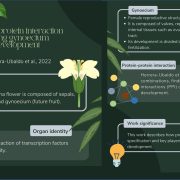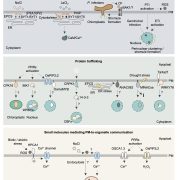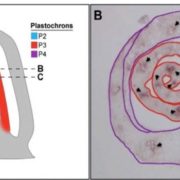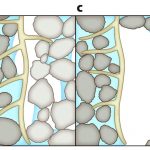Review: Developmental thermal responses in Arabidopsis (Plant Physiol.)
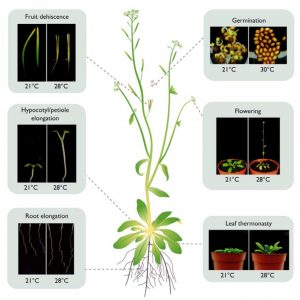 Plants can modify their growth in response to environmental challenges. In a recent review, Vu et al. summarize the molecular mechanisms underlying high temperature responses during the Arabidopsis life cycle. At early stages, high temperature promotes abscisic acid (ABA) biosynthesis and decreases gibberellic acid biosynthesis, resulting in germination inhibition. The effect of high ambient temperature on the organization and shape of the plant, or thermomorphogenesis, shares a large set of regulators of light response and circadian processes, e.g., Phytochrome B and PIF proteins. In seedlings, hypocotyl elongation and leaf bending are the typical response to high temperatures; in this case, auxin and brassinosteroids are the key elements. A similar action takes place in the roots, where high temperatures lead to an increase in auxin nuclear distribution, resulting in enhanced primary root growth and lateral root formation. High ambient temperature also affects reproductive development; flowering is accelerated by an increased expression of flowering promoting genes (SOC, FT, TSF). Later, during fruit development, chromatin remodeling in the INDEHISCENT promoter causes early dehiscence. (Summary by Humberto Herrera-Ubaldo) Plant Physiol. 10.1104/pp.19.00652
Plants can modify their growth in response to environmental challenges. In a recent review, Vu et al. summarize the molecular mechanisms underlying high temperature responses during the Arabidopsis life cycle. At early stages, high temperature promotes abscisic acid (ABA) biosynthesis and decreases gibberellic acid biosynthesis, resulting in germination inhibition. The effect of high ambient temperature on the organization and shape of the plant, or thermomorphogenesis, shares a large set of regulators of light response and circadian processes, e.g., Phytochrome B and PIF proteins. In seedlings, hypocotyl elongation and leaf bending are the typical response to high temperatures; in this case, auxin and brassinosteroids are the key elements. A similar action takes place in the roots, where high temperatures lead to an increase in auxin nuclear distribution, resulting in enhanced primary root growth and lateral root formation. High ambient temperature also affects reproductive development; flowering is accelerated by an increased expression of flowering promoting genes (SOC, FT, TSF). Later, during fruit development, chromatin remodeling in the INDEHISCENT promoter causes early dehiscence. (Summary by Humberto Herrera-Ubaldo) Plant Physiol. 10.1104/pp.19.00652




